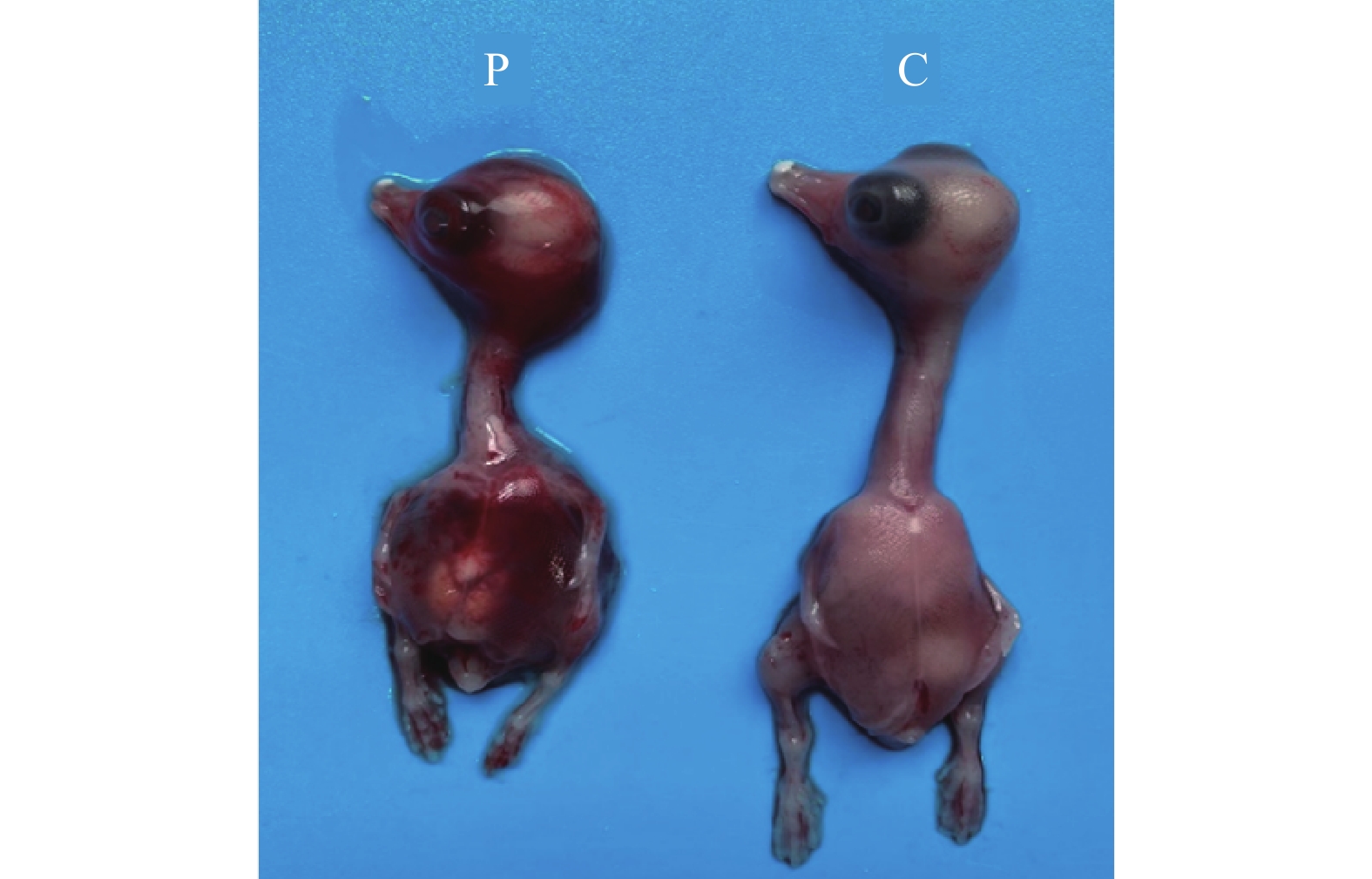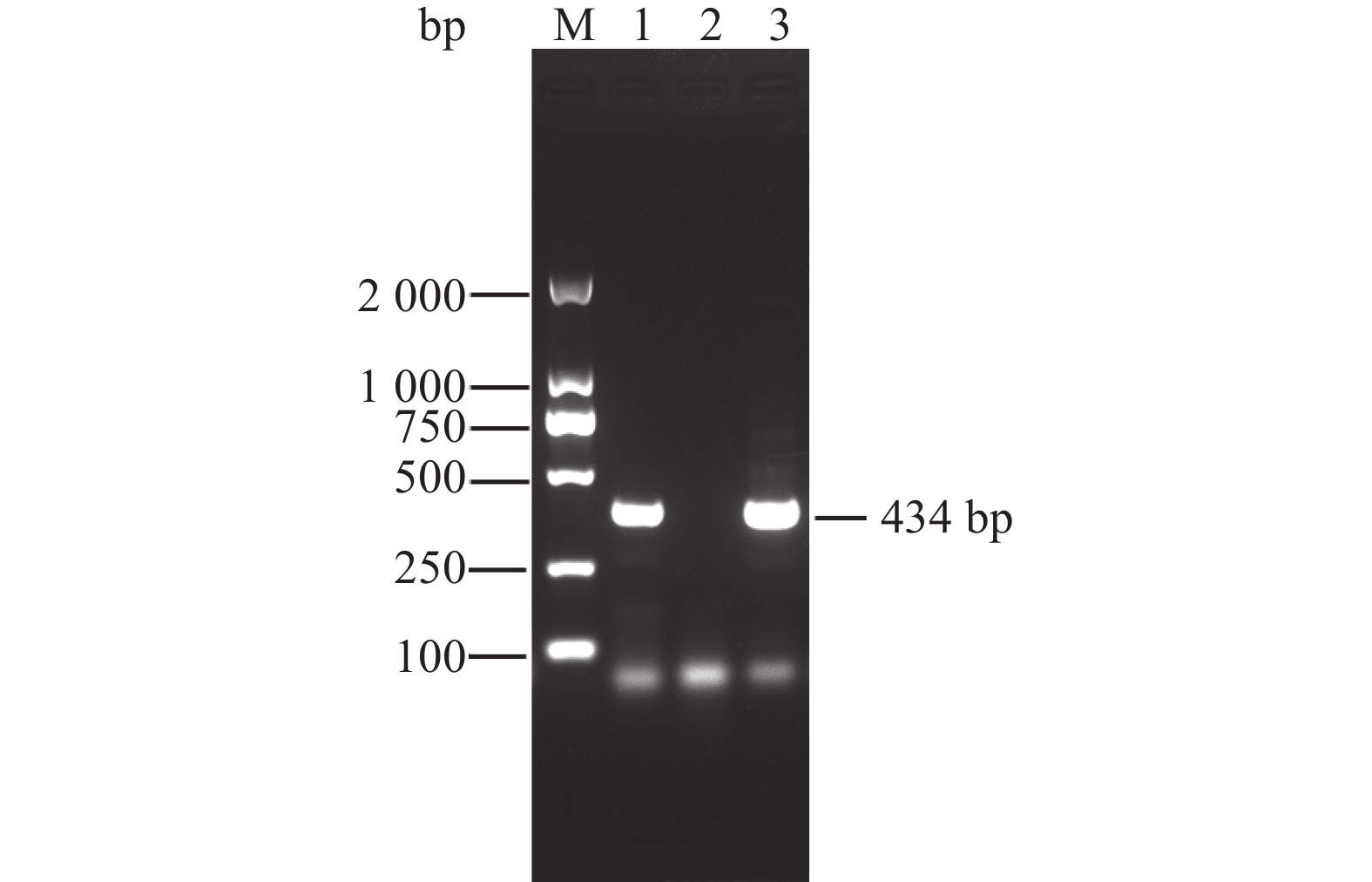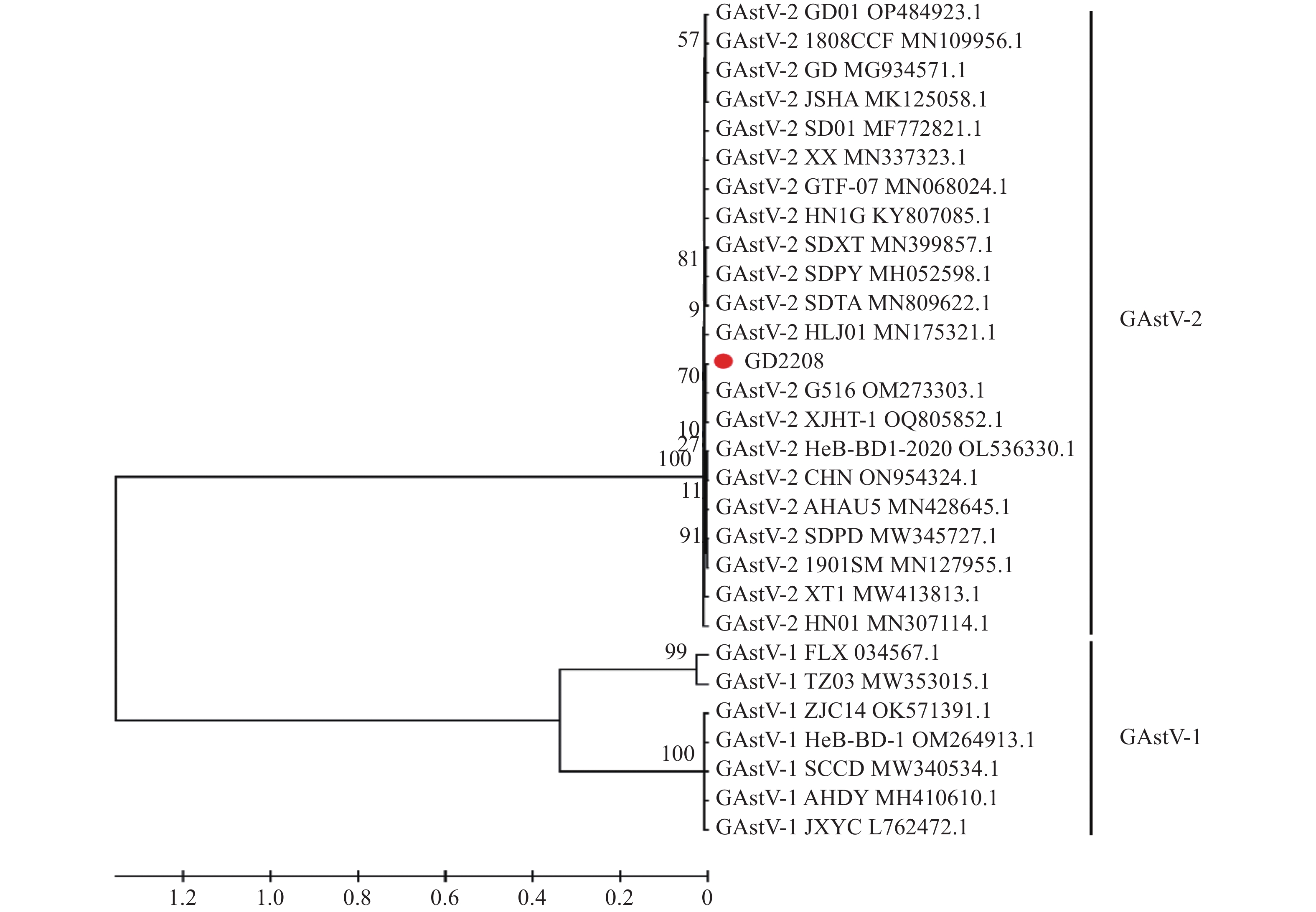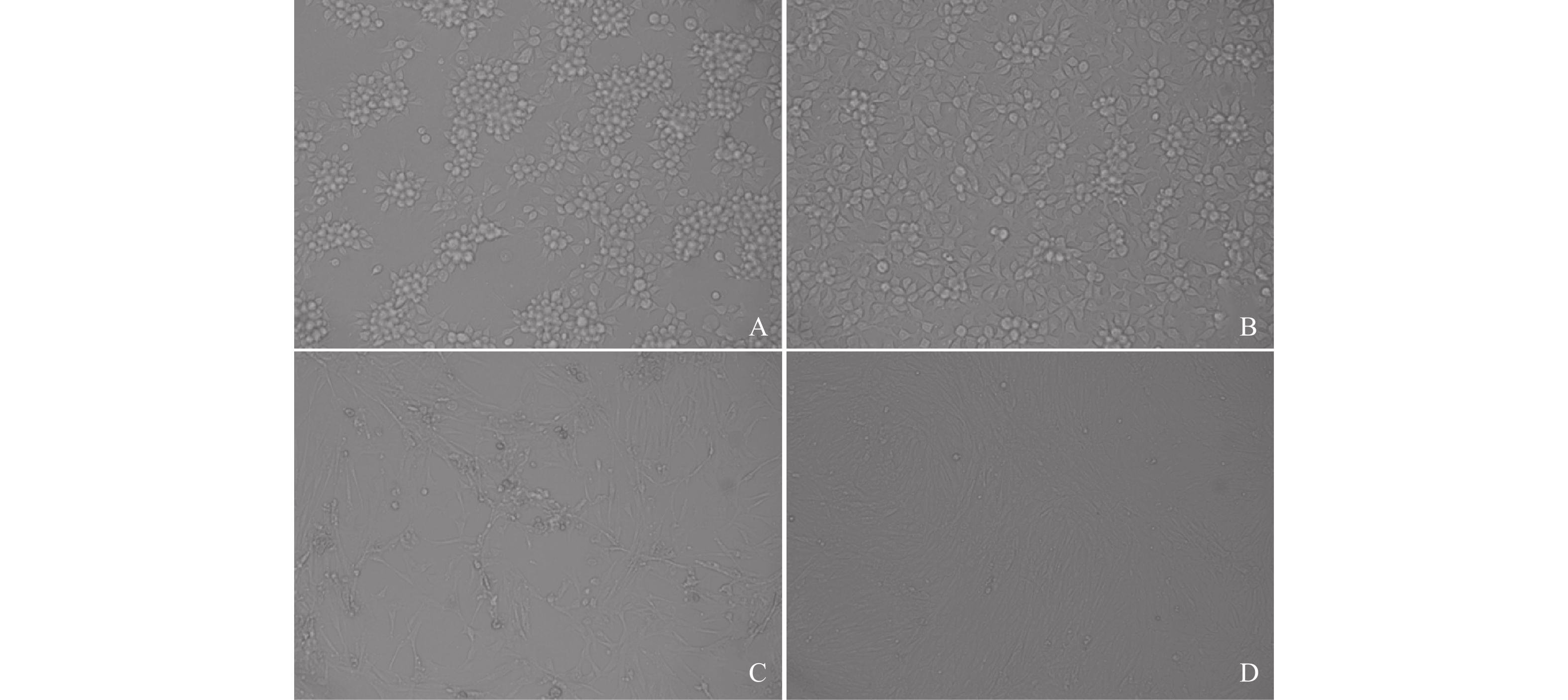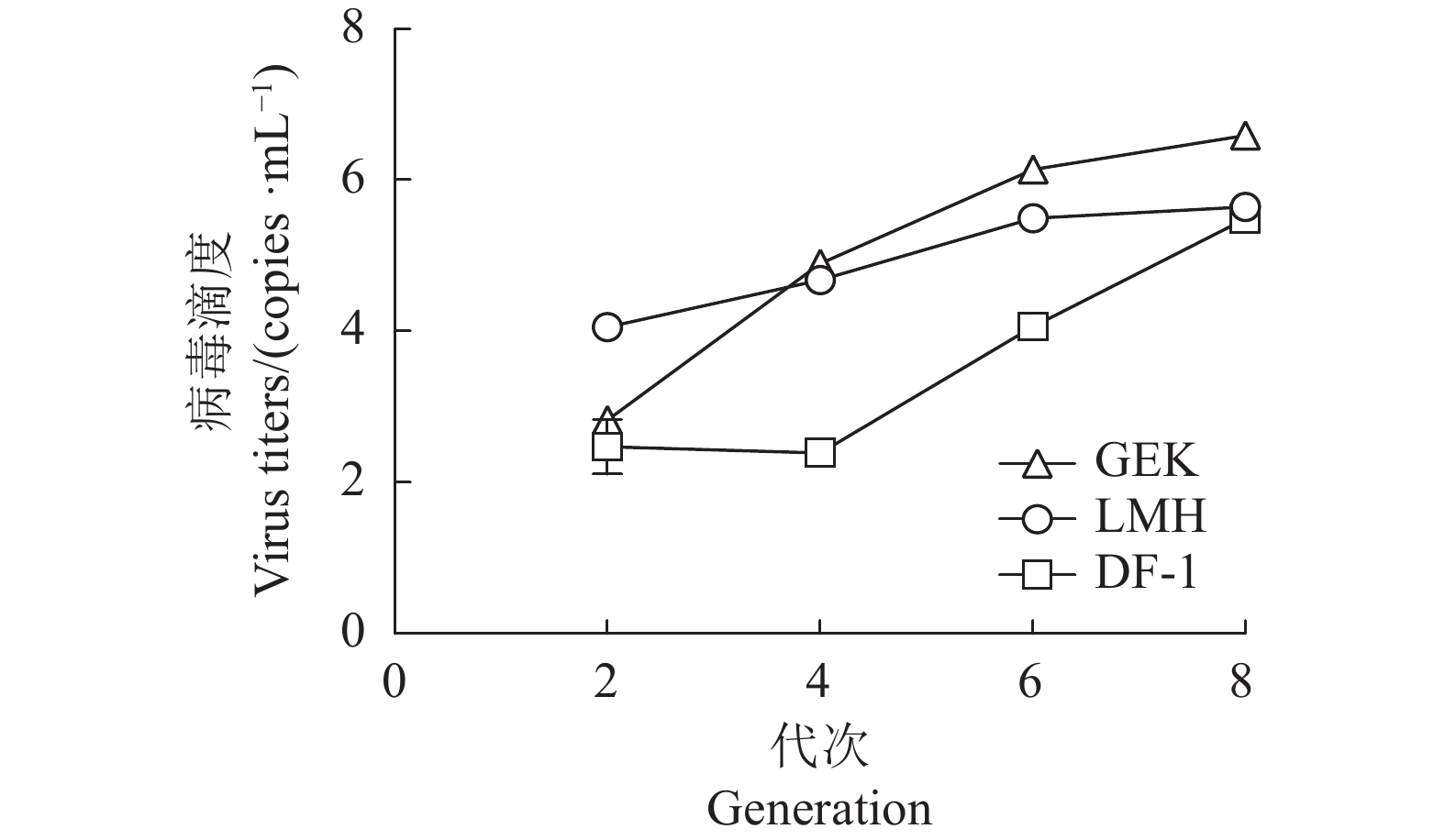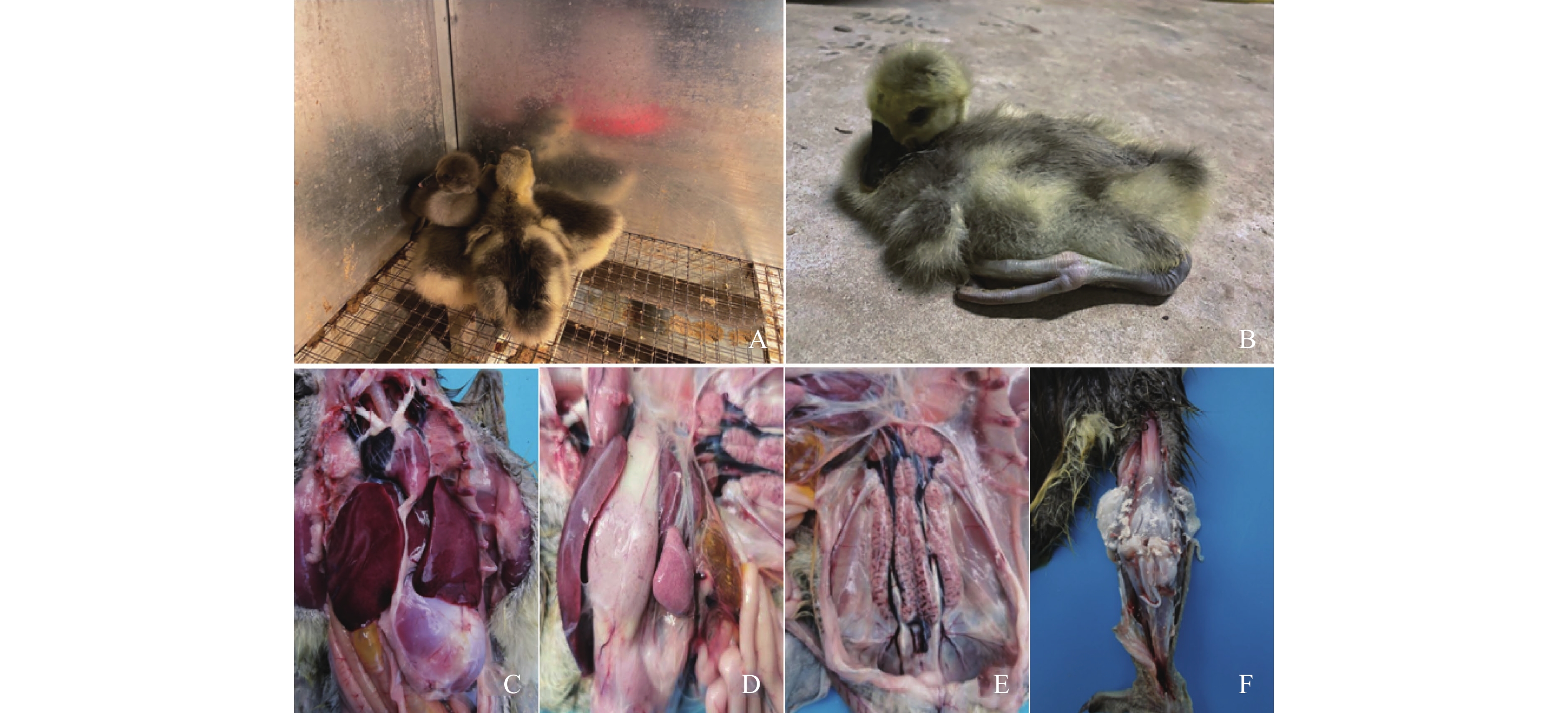Isolation, Identification, and Culture characteristics of a Genotype Ⅱ Goose Astrovirus
-
摘要:
目的 明确鹅星状病毒(Goose astrovirus, GAstV)的致病性和体外培养特性。 方法 对广东某鹅场表现为内脏和关节痛风的发病鹅组织样品进行病原学检测、病毒分离鉴定、病毒基因序列测定与分析、病毒培养特性及致病性研究。 结果 从中分离到1株鹅星状病毒,命名为GD2208株;ORF2基因核苷酸序列比对分析显示,该毒株与基因Ⅱ型鹅星状病毒(GAstV-Ⅱ)参考株同源性最高,为97.4%~99.1%;进化树分析显示该毒株与GAstV-Ⅱ参考株处于同一进化分支。动物回归试验显示,以该毒株感染3日龄雏鹅后致死率为20%,感染鹅临床症状、剖检病变及病理组织学变化与自然发病鹅相似。禽胚及细胞适应性研究结果显示,该毒株能在鹅胚中稳定增殖,但盲传4代后仍无法适应SPF鸡胚和番鸭胚;病毒在GEK和LMH细胞中均能稳定增殖且可见明显细胞病变,在DF-1上可稳定繁殖,但盲传至8代后仍未见细胞病变。 结论 本研究自表现痛风症状雏鹅中分离到1株GAstV-Ⅱ毒株,该毒株感染3 日龄雏鹅可发生典型痛风症状,对鹅胚、GEK、LMH和DF-1细胞均有一定适应性,以上结果为进一步开展GAstV的致病机制、疫苗和药物研发奠定了基础。 Abstract:Objective To clarify the pathogenicity and culture characteristics of Goose astrovirus(GAstV). Methods Disease diagnosis and pathogen isolation, identification, gene sequencing, culture characteristics , and pathogenicity on a goose at a farm in Guangdong showing visceral and gout symptoms were conducted. Results The Goose astrovirus (GAstV) isolated from the tissue sample was named GD2208. It showed the highest homology of 97.4%–99.1% with the reference strain GAstV-Ⅱ based on the ORF2 gene nucleotide sequence. They belonged to the same evolutionary branch on the evolutionary tree. In an animal regression test, the chicks inoculated with GD2208 displayed similar clinical symptoms as well as the pathological and histopathological changes observed on the naturally infected 3-day-old goose and had a 20% mortality rate. The isolate could proliferate in goose embryos, but unable to adapt to SPF chicken or Muscovy duck embryos after 4 generations of blind transmission. It could also grow in GEK and LMH cells with the apparent cytopathic effects or in DF-1 cells without the effects after 8 generations of blind transmission. Conclusion A GAstV-Ⅱ strain isolated from a diseased goose when inoculated in healthy chicks produced similar symptoms on the birds, and it could grow in goose embryos, GEK, LMH, and DF-1 cells. -
Key words:
- Goose astrovirus /
- isolation /
- identification /
- cultural characteristics
-
图 1 临床样品的(RT-)PCR检测
M:DL2000 Marker;1:鹅星状病毒阳性对照;2:阴性对照;3:心脏;4:肝脏;5:脾脏;6:胰腺;7:肾脏;8~14:AIV、GCV、GPV、ARV、GHPV、TMUV、FAdV。
Figure 1. RT-PCR detection on clinical samples
M: DL2000 marker; 1: GAstV positive control; 2: negative control; 3: heart; 4: liver; 5: spleen; 6: pancreas; 7: kidney; 8–14: AIV, GCV, GPV, ARV, GHPV, TMUV, and FAdV, respectively.
图 7 F4代禽胚尿囊液RT-PCR检测结果
M:DL2000 Marker;1:GAstV阳性对照;2:阴性对照;3~5:鹅胚尿囊液;6~8:番鸭胚尿囊液;9~11:SPF鸡胚尿囊液。
Figure 7. RT-PCR results on avian embryo allantoic fluid of F4 goose
M: DL2000 marker; 1: GAstV positive control; 2: negative control; 3–5: goose embryo allantoic fluid; 6–8: Muscovy duck embryo allantoic fluid; 9–11: SPF chicken embryo allantoic fluid.
图 11 人工感染鹅临床症状及剖检病变
A:感染鹅,精神萎靡、蹲伏、腹泻、嗜睡、聚集;B:感染鹅,腿部关节肿胀、无法站立和行走;C:心脏;D:脾脏;E:肾脏;F:腿部关节。
Figure 11. Clinical symptoms and autopsy lesions of GAstV-infected geese
A: infected geese showing depression, crouching, diarrhea, lethargy, and aggregating; B: infected geese with swollen leg joints, inability to stand and walk; C: heart; D: spleen; E: kidney; F: leg joints.
-
[1] ZHANG Q S, CAO Y X, WANG J, et al. Isolation and characterization of an astrovirus causing fatal visceral gout in domestic goslings [J]. Emerging Microbes & Infections, 2018, 7(1): 71. [2] YANG J, TIAN J J, TANG Y, et al. Isolation and genomic characterization of gosling gout caused by a novel goose astrovirus [J]. Transboundary and Emerging Diseases, 2018, 65(6): 1689−1696. doi: 10.1111/tbed.12928 [3] JIN M L, WANG X Y, NING K, et al. Genetic characterization of a new astrovirus in goslings suffering from gout [J]. Archives of Virology, 2018, 163(10): 2865−2869. doi: 10.1007/s00705-018-3932-5 [4] ARIAS C F, DUBOIS R M. The astrovirus capsid: A review [J]. Viruses, 2017, 9(1): 15. doi: 10.3390/v9010015 [5] WANG A P, ZHANG S, XIE J, et al. Isolation and characterization of a goose astrovirus 1 strain causing fatal gout in goslings, China [J]. Poultry Science, 2021, 100(11): 101432. doi: 10.1016/j.psj.2021.101432 [6] YUAN X Y, MENG K, ZHANG Y X, et al. Genome analysis of newly emerging goose-origin nephrotic astrovirus in China reveals it belongs to a novel genetically distinct astrovirus [J]. Infection, Genetics and Evolution: Journal of Molecular Epidemiology and Evolutionary Genetics in Infectious Diseases, 2019, 67: 1−6. doi: 10.1016/j.meegid.2018.10.014 [7] ZHU Y C, WANG H Y, HUA J G, et al. Isolation and pathogenicity of a novel goose astrovirus from overfed adult landaise geese in China [J]. Viruses, 2022, 14(12): 2806. doi: 10.3390/v14122806 [8] PANTIN-JACKWOOD M J, STROTHER K O, MUNDT E, et al. Molecular characterization of avian astroviruses [J]. Archives of Virology, 2011, 156(2): 235−244. doi: 10.1007/s00705-010-0849-z [9] 陈玫婷, 孙敏华, 向勇, 等. 鹅星状病毒的流行病学及研究进展 [J]. 广东农业科学, 2023, 50(10):157−166.CHEN M T, SUN M H, XIANG Y, et al. Epidemiology and research progress of goose astrovirus [J]. Guangdong Agricultural Sciences, 2023, 50(10): 157−166. (in Chinese) [10] 张玉杰, 孙宁, 刘东, 等. 鹅星状病毒的分离鉴定及全基因组序列分析 [J]. 畜牧兽医学报, 2020, 51(11):2765−2777. doi: 10.11843/j.issn.0366-6964.2020.11.015ZHANG Y J, SUN N, LIU D, et al. Isolation, identification and complete genomic sequence analysis of goose astrovirus [J]. Chinese Journal of Animal and Veterinary Sciences, 2020, 51(11): 2765−2777. (in Chinese) doi: 10.11843/j.issn.0366-6964.2020.11.015 [11] REN Z H, ZHANG Q S, LI J X, et al. Detection and characterization of goose astrovirus infections in hatcheries and commercial goose flocks [J]. Transboundary and Emerging Diseases, 2023, 2023: 1127544. [12] WANG H Y, ZHU Y C, YE W C, et al. Genomic and epidemiological characteristics provide insights into the phylogeographic spread of goose astrovirus in China [J]. Transboundary and Emerging Diseases, 2022, 69(5): e1865−e1876. [13] ZHANG M R, WEI X Y, QIAN J, et al. Establishment and application of indirect ELISAs for detecting antibodies against goose astrovirus genotype 1 and 2 [J]. Vaccines, 2023, 11(3): 664. doi: 10.3390/vaccines11030664 [14] ZHANG F F, LI H Q, WEI Q P, et al. Isolation and phylogenetic analysis of goose astrovirus type 1 from goslings with gout in Jiangxi Province, China [J]. Poultry Science, 2022, 101(7): 101800. doi: 10.1016/j.psj.2022.101800 [15] CHEN H, ZHANG B, YAN M, et al. First report of a novel goose astrovirus outbreak in Cherry Valley ducklings in China [J]. Transboundary and Emerging Diseases, 2020, 67(2): 1019−1024. doi: 10.1111/tbed.13418 [16] NIU X Y, TIAN J J, YANG J, et al. Novel goose astrovirus associated gout in gosling, China [J]. Veterinary Microbiology, 2018, 220: 53−56. doi: 10.1016/j.vetmic.2018.05.006 [17] ZHANG X Y, REN D, LI T F, et al. An emerging novel goose astrovirus associated with gosling gout disease, China [J]. Emerging Microbes & Infections, 2018, 7(1): 152. [18] LI J Y, HU W Q, LIU T N, et al. Isolation and evolutionary analyses of gout-associated goose astrovirus causing disease in experimentally infected chickens [J]. Poultry Science, 2021, 100(2): 543−552. doi: 10.1016/j.psj.2020.11.003 [19] TODD D, SMYTH V J, BALL N W, et al. Identification of chicken enterovirus-like viruses, duck hepatitis virus type 2 and duck hepatitis virus type 3 as astroviruses [J]. Avian Pathology: Journal of the W V P A, 2009, 38(1): 21−30. doi: 10.1080/03079450802632056 [20] CANUTI M, KROYER A N K, OJKIC D, et al. Discovery and characterization of novel RNA viruses in aquatic North American wild birds [J]. Viruses, 2019, 11(9): 768. doi: 10.3390/v11090768 [21] LI P F, ZHANG R H, CHEN J H, et al. Development of a duplex semi-nested PCR assay for detection of classical goose parvovirus and novel goose parvovirus-related virus in sick or dead ducks with short beak and dwarfism syndrome [J]. Journal of Virological Methods, 2017, 249: 165−169. doi: 10.1016/j.jviromet.2017.09.011 [22] NIU X Y, ZHANG B Q, YU X L, et al. Preparation and evaluation of goose reovirus inactivated vaccine [J]. BMC Veterinary Research, 2017, 13(1): 214. doi: 10.1186/s12917-017-1134-0 [23] GUERIN J L, GELFI J, DUBOIS L, et al. A novel polyomavirus (goose hemorrhagic polyomavirus) is the agent of hemorrhagic nephritis enteritis of geese [J]. Journal of Virology, 2000, 74(10): 4523−4529. doi: 10.1128/JVI.74.10.4523-4529.2000 [24] SU J L, LI S, HU X D, et al. Duck egg-drop syndrome caused by BYD virus, a new Tembusu-related flavivirus [J]. PLoS One, 2011, 6(3): e18106. doi: 10.1371/journal.pone.0018106 [25] MEULEMANS G, BOSCHMANS M, BERG T P, et al. Polymerase chain reaction combined with restriction enzyme analysis for detection and differentiation of fowl adenoviruses [J]. Avian Pathology: Journal of the W V P A, 2001, 30(6): 655−660. doi: 10.1080/03079450120092143 [26] YI Z W, DING R, CAO R B, et al. Development of a duplex TaqMan real-time RT-PCR assay for simultaneous detection of goose astrovirus genotypes 1 and 2 [J]. Journal of Virological Methods, 2022, 306: 114542. doi: 10.1016/j.jviromet.2022.114542 [27] YIN D, TIAN J J, YANG J, et al. Pathogenicity of novel goose-origin astrovirus causing gout in goslings [J]. BMC Veterinary Research, 2021, 17(1): 40. doi: 10.1186/s12917-020-02739-z [28] WEI F, YANG J, HE D L, et al. Evidence of vertical transmission of novel astrovirus virus in goose [J]. Veterinary Microbiology, 2020, 244: 108657. doi: 10.1016/j.vetmic.2020.108657 [29] WAN C H, CHEN C T, CHENG L F, et al. Specific detection of the novel goose astrovirus using a TaqMan real-time RT-PCR technology [J]. Microbial Pathogenesis, 2019, 137: 103766. doi: 10.1016/j.micpath.2019.103766 [30] YIN D, YANG J, TIAN J J, et al. Establishment and application of a TaqMan-based one-step real-time RT-PCR for the detection of novel goose-origin astrovirus [J]. Journal of Virological Methods, 2020, 275: 113757. doi: 10.1016/j.jviromet.2019.113757 [31] CHEN Q X, YU Z L, XU X, et al. First report of a novel goose astrovirus outbreak in Muscovy ducklings in China [J]. Poultry Science, 2021, 100(10): 101407. doi: 10.1016/j.psj.2021.101407 [32] WEI F, YANG J, WANG Y M, et al. Isolation and characterization of a duck-origin goose astrovirus in China [J]. Emerging Microbes & Infections, 2020, 9(1): 1046−1054. [33] 朱寅初, 王宏宇, 云涛, 等. 浙江地区鹅星状病毒分离鉴定及其衣壳蛋白多克隆抗体的制备 [J]. 浙江农业学报, 2022, 34(10):2149−2159.ZHU Y C, WANG H Y, YUN T, et al. Isolation and identification of goose astrovirus in Zhejiang Province, China, and preparation of polyclone antibodies against capside protein [J]. Acta Agriculturae Zhejiangensis, 2022, 34(10): 2149−2159. (in Chinese) -







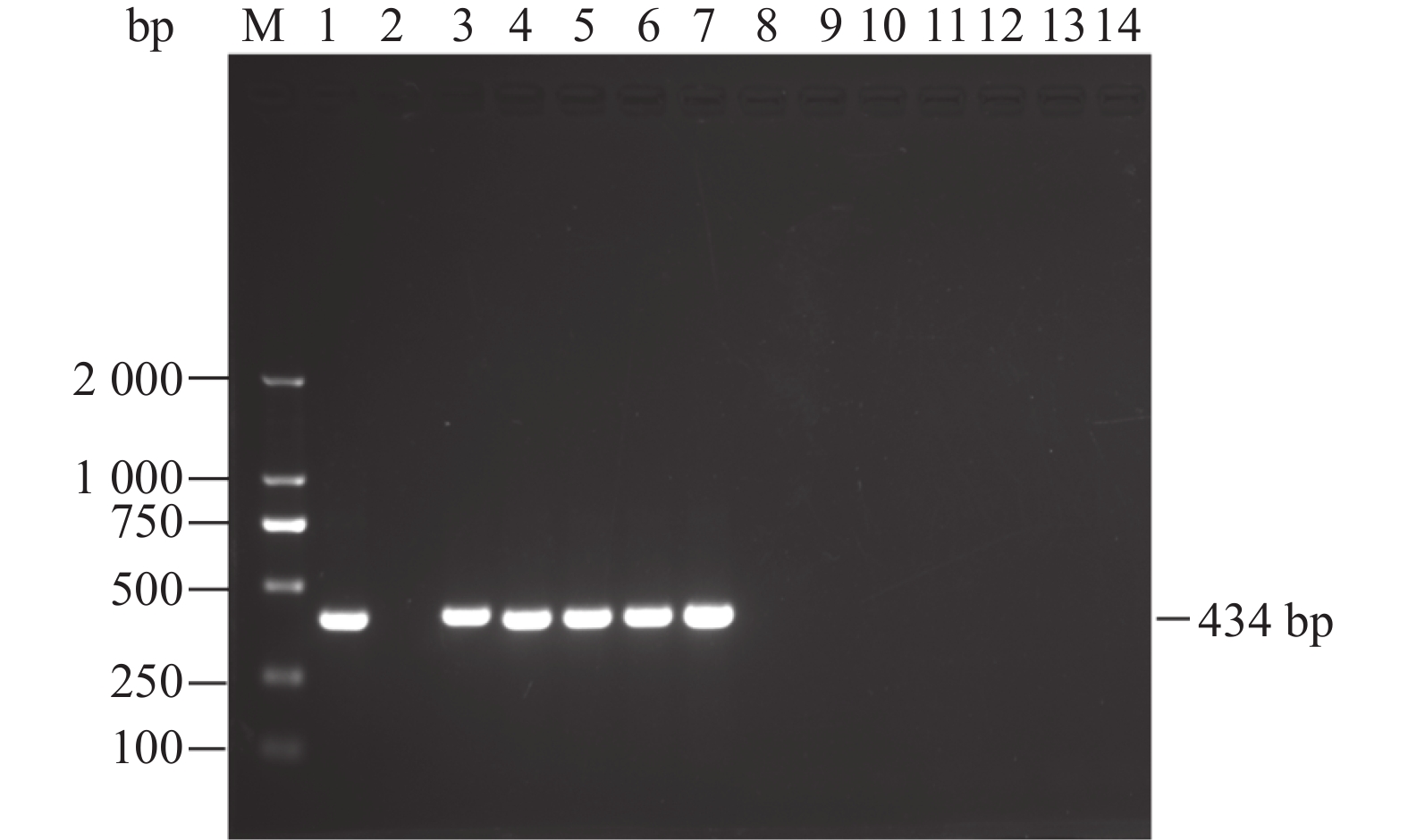
 下载:
下载:
